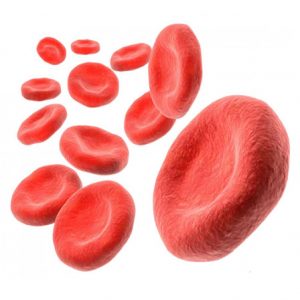The hemoglobin electrophoresis assay detects different types and proportions of the hemoglobin protein in red blood cells called erythrocytes. It is used as a screening test to identify variant and abnormal hemoglobins, including
Hemoglobin is the protein responsible for transporting oxygen in the blood. Therefore, in order for oxygen to reach the tissues in a healthy way, it is necessary to have a normal hemoglobin structure.
To date, there are hundreds of mutations identified in the gene regions that carry the code for the hemoglobin protein. Due to these mutations, the structure of amino acid sequences changes while the hemoglobin protein is synthesized, and as a result, the changing structure of hemoglobin adversely affects the oxygen transport function.
The hemoglobin structure resulting from the change of amino acid sequences of hemoglobin is called variant hemoglobins and abnormal hemoglobins. Therefore, the hemoglobin problems that arise are classified under the general title of hemoglobinopathies. Depending on the affected chain type of hemoglobin, the region of the mutation and the rate of effect of hemoglobin function, different severity of the disease occurs. These diseases have been defined as “thalassemias” and are known as “mediterranean anemia” among the people.
Mediterranean anemia is very common in the world because it can be passed on genetically to generations. Although it is called Mediterranean anemia due to the Mediterranean environment where it was first defined and most common, it is seen all over the world due to factors such as geographical migrations. However, the regions with the highest density are around the Mediterranean. Hemoglobinopathies are common in Turkey because it is located in the Mediterranean basin. The most common regions are the Mediterranean and Eastern Anatolia Regions. For this reason, hemoglobin electrophoresis is performed in premarital screening tests.
Types of Hemoglobin Electrophoresis Tests
- hemoglobin A1 (HbA1)
- hemoglobin A2 (HbA2)
- hemoglobin F Test ( HbF; fetal hemoglobin )
- hemoglobin C Test ( HbC )
- hemoglobin S Test ( HbS )
Hemoglobin electrophoresis test normal values;
- hemoglobin A1 (HbA1); 95-98%
- hemoglobin A2 (HbA2); 2-3%
- hemoglobin F (HbF; fetal hemoglobin); 0.8-2%
- hemoglobin C (HbC); 0%
- hemoglobin S (HbS); 0%
The predominant type of hemoglobin in adults is hemoglobin A1 (also called A or A0). A decrease in the level of hemoglobin A or an increase in the level of other hemoglobin types in electrophoresis may be an indicator of various diseases. Therefore, it is important to perform hemoglobin electrophoresis in suspected cases. Since hemoglobinopathies, which are very common in the world and in Turkey, are genetically transmitted, hemoglobin electrophoresis should also be performed in premarital tests, especially in endemic regions. In this way, it can be ensured that people are cautious about having healthy children with the counseling service they will receive before marriage, knowing their own situation.
Hemoglobinopathies that will be detected the most because of their prevalence in the hemoglobin electrophoresis test;
- sickle cell anemia (Hb S)
- Mediterranean anemia (Beta-thalassemia)
Since it shows autosomal recessive genetic transmission, not every individual with mutations is diagnosed as a patient. After determining the presence of hemoglobinopathy in hemoglobin electrophoresis, genetic screening is performed by mutation analysis. According to the genetic test screening;
- If there are mutations in both gene alleles; Thalassemia major patient
- If there is a mutation in a gene allele; thalassemia minor carrier
- If there is no mutation in both genes; It is described as solid.
When hemoglobin electrophoresis test results show the presence of abnormal hemoglobin;
- Hemoglobin C disease;
(It causes severe anemia.)
- Rare hemoglobinopathies involving more than one type;
(It causes the structure or function of erythrocytes to be produced incorrectly.)
- sickle cell anemia;
(In cases such as infections, surgical interventions that cause stress in the body, the erythrocytes take the shape of a sickle.)
- thalassemia;
( Depending on the type and number of mutations in hemoglobin genes, anemia of various severity occurs. )
The test is applied by analyzing a tube of blood taken from the patient. It doesn’t matter if the patient is hungry or full.
